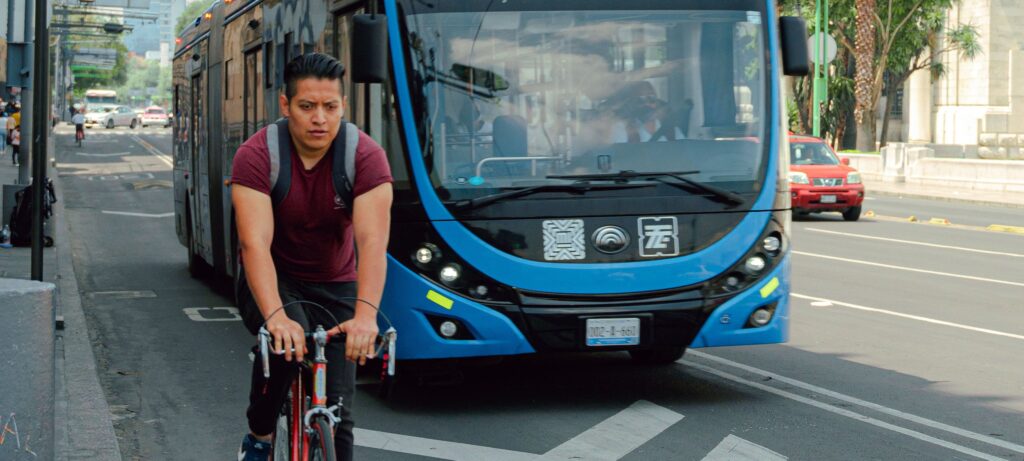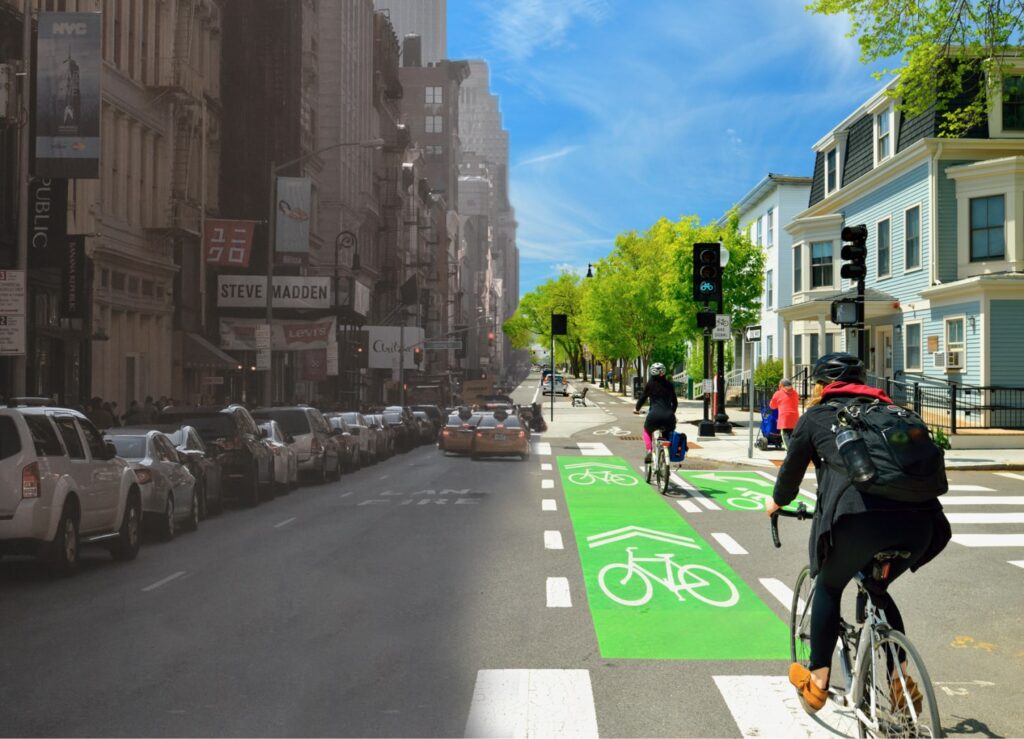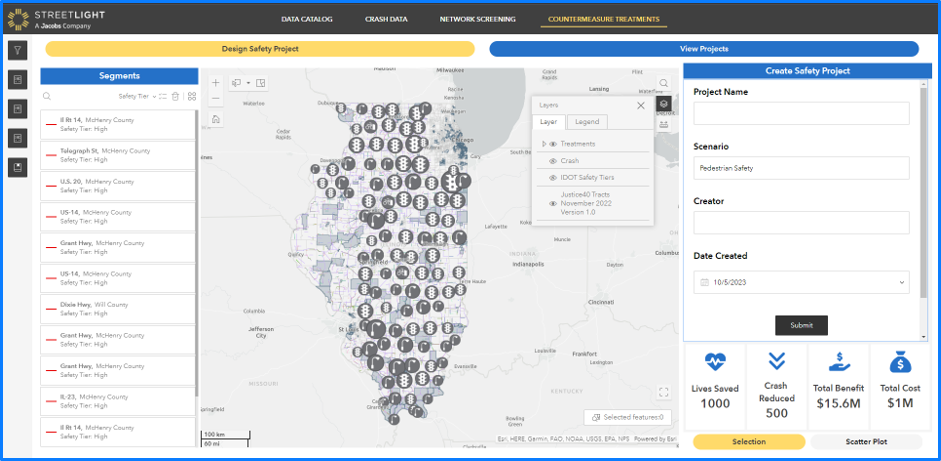Sources for Inquiry Writing
The Changing Needs of Urban Centers
Urban centers are becoming more densely populated across the U.S. [1] As of 2020, urban areas had an average population density of 2,553 people per square mile, up from 2,343 in 2010. At the same time, urban expansion has led to a significant increase in private cars. This, in turn, has caused more congestion and higher emissions.
But congested roadways and rising emissions don’t have to be the inevitable results of higher population density. Many cities are taking steps to address these challenges with sustainable transportation planning that emphasizes shared mobility and other key strategies.
Some of the green urban transportation strategies now gaining popularity include:
- Focusing on “open streets,” where roadways are temporarily closed to vehicle traffic and opened for public use to encourage walking, cycling, or community events.
- Implementing congestion pricing to discourage vehicle use at busier times of day.
- Creating a reliable network of electric vehicle (EV) chargers to make EVs a more convenient alternative to gas and diesel vehicles.
- Building multimodal infrastructure to support active transportation and shared mobility modes like walking, biking, and public transit.
What Is the Future of Transportation Systems?
Transportation is responsible for more climate warming greenhouse gases in the U.S. than any other sector. [2] One study suggests that lowering emissions in the transportation sector alone could account for more than one-third of the 2030 U.S. climate target.3 This will encourage a focus on transportation systems that produce lower amounts of greenhouse gas and other pollutants, and the adoption of technologies like EVs, hybrid vehicles or alternative fuels.
Most U.S. cities are car-centric by design, with much of the population living in sprawling suburban neighborhoods where people must travel miles to reach key commercial centers for employment, school, goods, and essential services. This type of design disadvantages anyone who does not have access to a car, creating inequities. Investing in and expanding multimodal transportation can help solve this problem.
Public transit is a particularly powerful tool to address these inequities. With data on common traffic origins and destinations, planners can understand where bus routes would be most essential for commuting or accessing essential goods and services like groceries and medical care.
For example, SamTrans, a transit authority in the Bay Area, used traffic data to study how COVID had impacted bus ridership on key commuter routes. Their analysis revealed opportunities to optimize bus schedules, which led to a 30% boost in ridership.

How Will Public Transport Change in the Future?
New transportation solutions will be able to use technologies like advanced mobility platforms and autonomous vehicles. Planners could also consider rapid bus lines, better timetables, and more responsive schedules as a way to improve public transportation. New market entrants can leverage these innovations as they aim to eliminate barriers, enhance efficiency, and provide a seamless, user-friendly experience.
Crucially, decision-makers will also need to look for different funding methods as traditional gas tax revenues drop. Governments have long relied on revenues from the sale of gas and will need to find alternative solutions as gas-powered vehicles decline.
New systems also need careful planning to avoid an increase in congestion and minimize environmental impact. Planners will need to consider autonomous vehicles and mobility as a service solutions, as these technologies may eventually be cost-competitive alongside traditional urban mass transport services.
Shifting Perspectives from Transportation to Mobility
Transportation focuses on the logistics of moving vehicles, while mobility factors in accessibility, environmental sustainability, and user experience. For this reason, many advocates and practitioners within the transportation industry are calling for an increased emphasis on mobility as part of a people-oriented approach to urban planning.
Centering People: Equity in Urban Transportation
Equitable access to transportation is critical because it impacts access to housing, employment, health care, education, and other essential services. This means transportation systems can easily exacerbate existing inequities people experience based on their race, class, disability, and more, or they can become tools to mitigate these inequities.
For example, low-income communities that have greater access to jobs within a 15-minute drive have a higher upward economic mobility. Improvements to public transportation can help people who rely on this mode of travel for their employment needs. Currently, the average U.S. metropolitan resident can only access 30% of jobs in their region within a 90-minute journey. [4]
Some communities also suffer more than others when it comes to the burden of environmental hazards, including pollution from transportation. [5] Equitable urban transportation planning can mitigate these impacts and reduce the concentration of negative effects in specific areas — such as neighborhoods predominately inhabited by people of color.
Low-emission transportation modes like EVs, biking, and walking, as well as shared modes like public transit, can help cut overall transportation emissions and improve air quality in our cities. Access to safe and reliable transportation options such as cycling or walking can also contribute to general health. [6]

A Safer World for Bicycles and Pedestrians
Increasingly, planners are centering those outside of vehicles in transportation design conversations.
To create a safe world for bicyclists and pedestrians — often referred to by government entities as “vulnerable road users” — planners will need to focus on infrastructure improvements as well as policy initiatives and community engagement. For example, Complete Streets policies can help enable safe access for all road users, regardless of mode of transportation, age, or experience. [7]
Specifically, building safe cycling and pedestrian infrastructure often involves creating protected bike lanes and pedestrian paths along existing roadways to reduce conflicts with motorized traffic. Planners can also prioritize safety at intersections by adding pedestrian islands or countdown signals, increasing pedestrian crossing intervals, and adding bike-specific signal phases.

New Modes of Mobility: AVs and UAM
New modes of transportation are already here, and cities will need to wrestle with how to support and regulate these modes.
Autonomous Vehicles
As autonomous vehicles (AVs) become more popular, there will be significant implications for city development and transportation. Should these vehicles become widespread, this could have a big impact on transportation, urban design, land use, real estate, and safety. [9]
One such impact could include a significant reduction in the demand for parking and a drop in the number of vehicle miles traveled as people share transportation. Also, autonomous vehicles could improve first- and last-mile connections for individual travelers. While this may decrease the number of people who use conventional transit solutions, [10] it may also place additional pressure on transportation providers who could face additional revenue pressures as a consequence.
More widespread use of AVs could have implications when it comes to urbanization, as there may be less demand for land or services once set aside for “traditional” vehicles. Planners may need to redesign certain streets if there is less need for car parking, or develop new transportation nodes to support intermodal travel.
Urban Air Mobility
Urban air mobility (UAM) refers to the use of small electric vertical take-off and landing (eVTOL) that can carry passengers at lower altitudes in urban areas, and it could significantly impact transportation policies. Indeed, some organizations like Uber have already begun exploring this “space age” opportunity.
To accommodate these new aircraft, governments will need to develop “vertiports” [11] and other infrastructure while addressing land-use planning, zoning regulations, or safety standards for these new solutions. These vehicles would share air space with traditional aircraft and ground space with conventional cars or AVs. Further, noise could be a significant factor for planners, and lawmakers will need to mitigate disturbance to residents while maintaining UAM operations.
How will transportation planners integrate UAM solutions with existing transportation modes? They may plan for seamless passenger transfers between these aerial vehicles and other transit modes, such as trains or buses.
While AVs and UAMs may still be on the horizon, planners should also understand that these new technologies could produce inherent risks, including problems around cybersecurity and privacy. For example, there are several known cybersecurity vulnerabilities in the UAM realm. [12]
Big Plans Require Big Data
To make smart decisions as they plan for the future of urban transportation, stakeholders must gather and interpret data on how people move. Transportation professionals often rely on automatic traffic counters, manual counts, or surveys to collect this data, but these traditional methods each have limitations.
More and more, transportation planners and engineers are supplementing these traditional methods with online, on-demand traffic data platforms, which use big data methods to deliver more information for more roads and more modes, for any time of the day or year.
For example, in the video below, a data scientist from the Metropolitan Council of the Twin Cities explains how they use big data to get actionable emissions measurements to help regional municipalities and transportation agencies drive down greenhouse gas (GHG) emissions.





 on the uploaded document.
on the uploaded document.
0 General Document comments
0 Sentence and Paragraph comments
0 Image and Video comments
New Conversation
New Conversation
New Conversation
New Conversation
New Conversation
General Document Comments 0

